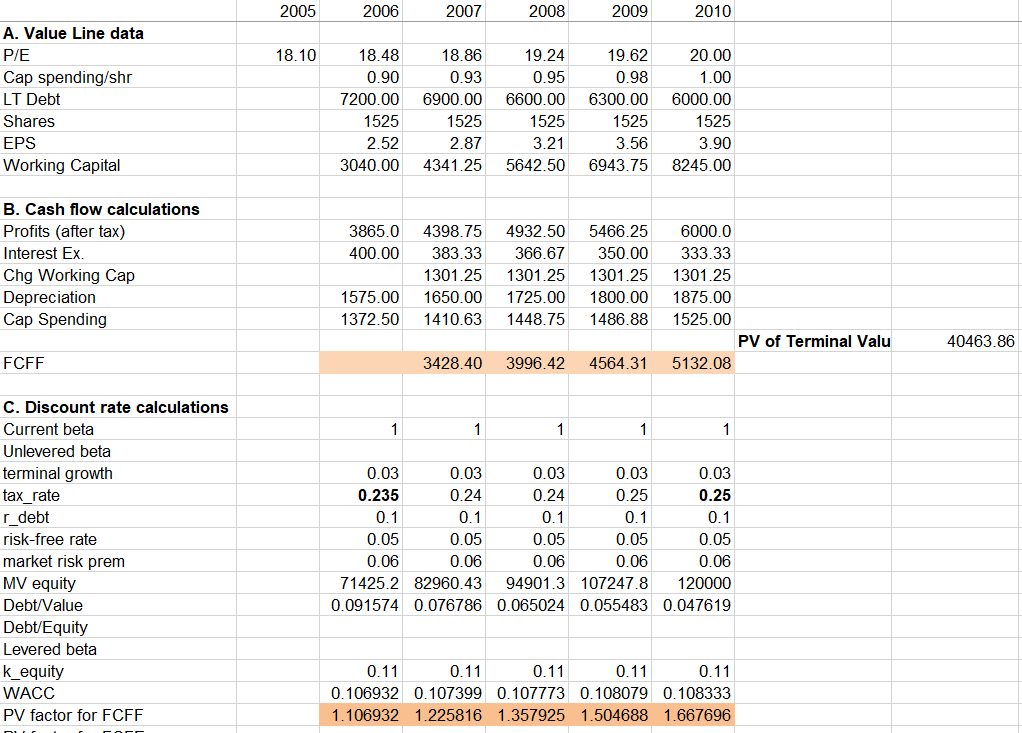Question
FI 4000, Summer 2018PROJECT #2 Due Date: Tue., 7/3/2018 Instructions: This project is individually assigned. You are not allowed to work in groups. Please submit
FI 4000, Summer 2018PROJECT #2 Due Date: Tue., 7/3/2018
Instructions:
This project is individually assigned. You are not allowed to work in groups. Please submit in class a single report that summarizes your answer to each part of the project. Your report should be brief yet self-contained and thorough enough to be understood by a non-specialist reader. The appendix should contain your Excel spreadsheet. Note: you should submit your report to the dropbox on the course website. It is your responsibility to ensure that it has been received by 7:30 PM on Tuesday, 7/3/2018. No late work will be accepted.
Problem 1
Pick a stock of your choice which you think is likely to be in a high-growth stage and which has publicly-available financial statements for fiscal year 2016. From financial statements, obtain Total Revenue, EBIT, Capital Expenditures, Net Working Capital, Depreciation, and the Debt-to-Equity ratio (use Long-term debt as a measure of total debt) for fiscal year 2016. Make sure the company has positive debt and positive EBIT. The income statement numbers should be for the entire year, not just for the fourth quarter. (Note: possible sources for financial statements include the companys website, finance.yahoo.com, or the Securities and Exchange Commission (www.sec.gov).)
Assume that the stock will be in a high growth stage over the next 8 years (2017-2024), after which it will reach a stable, lower-growth phase in year 9 (year 2025), which will last into the indefinite future. In addition, assume the following parameters:
The tax rate = 34%.
T-bill rate = 6.5 percent
Market risk premium = 5.5 percent.
High-growth phase:
Expected growth rate in EBIT, Capital Expenditures, Revenues, NWC, and Depreciation: 7.5%.
Equity Beta during the high growth period: 1.34.
Cost of debt = 8.75%
Debt-to-equity stays constant over the high-growth phase.
Stable growth phase:
Expected growth rate in FCFF = 4.5%
Equity Beta during stable growth phase: 1.12
Cost of debt = 7.5%
Debt-to-equity ratio in the stable growth phase will fall to 60% of what it was in the high-growth phase
Capital expenditures are offset by depreciation.
Use the FCFF approach to calculate the enterprise value of the firm, the equity value of the firm, and the intrinsic share value as of the end of 2016.
Problem 2
Part A
Consider a bond with a settlement date of MM/DD/2016 (E.g., February 23, 2016), where
MM/DD corresponds to the month and day of your birthday. The maturity of the bond is
March 15, 2023. The coupon rate is 5.5%. If the yield to maturity of the bond is 5.34% (bond equivalent yield, semiannual compounding), what is the list price of the bond on the settlement date? What is the accrued interest on the bond? What is the invoice price of the bond?
Part B
Now suppose the bond in the previous question is selling for 102% of face value. What is the bonds yield to maturity? What would the yield to maturity be at a price of 102% of face value, if the bond pays its coupons only once a year?
Problem 3:
Let M be the month of your birthday.
Define D = M if M > 5; and D = M + 5 if M ? 5.
Assume the yield curve for default-free zero coupon bonds is currently as follows:
| Maturity (Years) | YTM |
| 1 | D% |
| 2 | D+1% |
| 3 | D+2 |
What are the implied one-year forward rates?
Assume that the pure expectations hypothesis of the term structure is correct. If market expectations are accurate, what will the pure yield curve (that is, the yields to maturity on one and two year zero coupon bonds) be next year?
If you purchase a two year zero coupon bond now, what is the expected total rate of return over the next year? What if you purchase a three-year zero coupon bond? Ignore taxes.
Problem 4
Consider a bond with settlement date MM/DD/2016, where MM/DD corresponds to the month and day of your birthday. The maturity date of the bond is 11/15/2025. The coupon rate of the bond is 7%, and the bond pays coupons semiannually. The bond has YTM=8%.
Find the duration of the bond.
What would be the duration of the bond if coupons were paid annually?
Are the two durations you calculated different? If so, how would you explain the difference?
2
Company/Bond = Facebook
Birthday = 07/23/1992

Step by Step Solution
There are 3 Steps involved in it
Step: 1

Get Instant Access to Expert-Tailored Solutions
See step-by-step solutions with expert insights and AI powered tools for academic success
Step: 2

Step: 3

Ace Your Homework with AI
Get the answers you need in no time with our AI-driven, step-by-step assistance
Get Started


